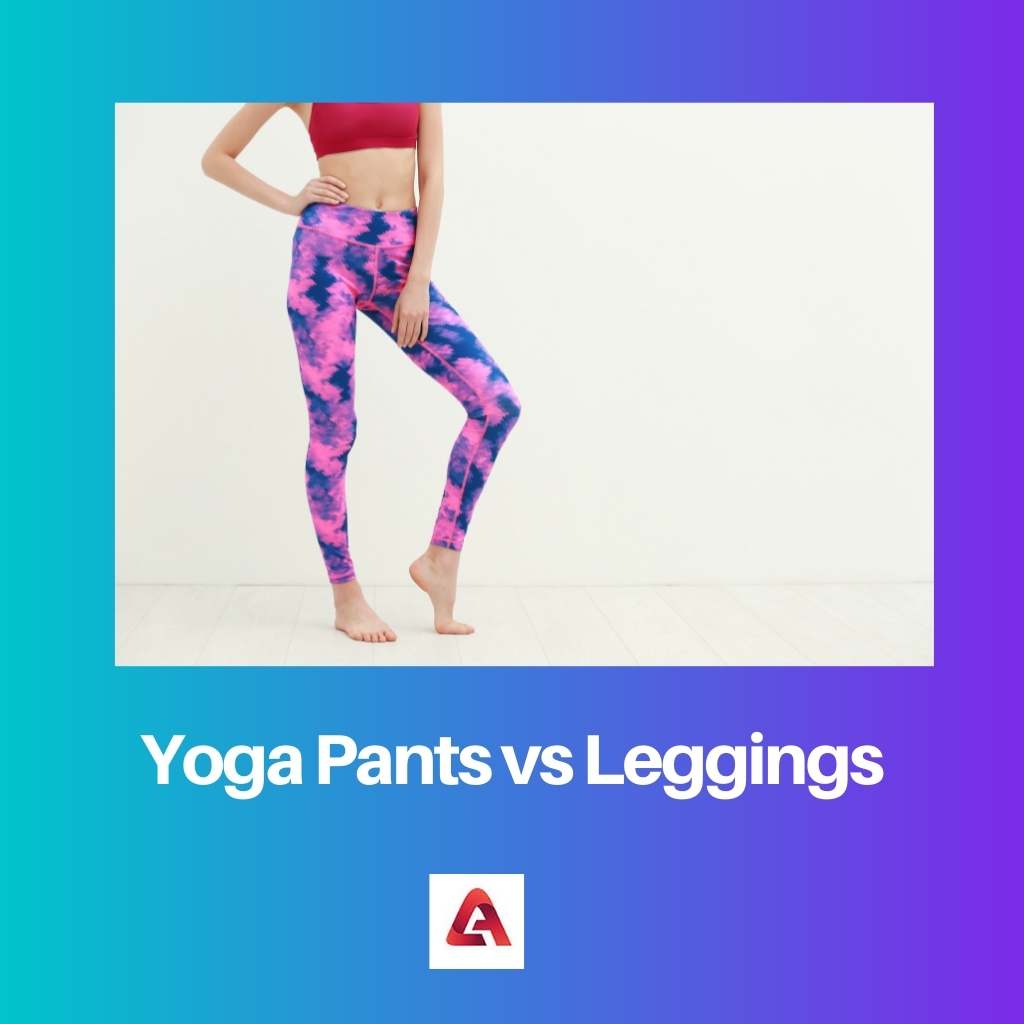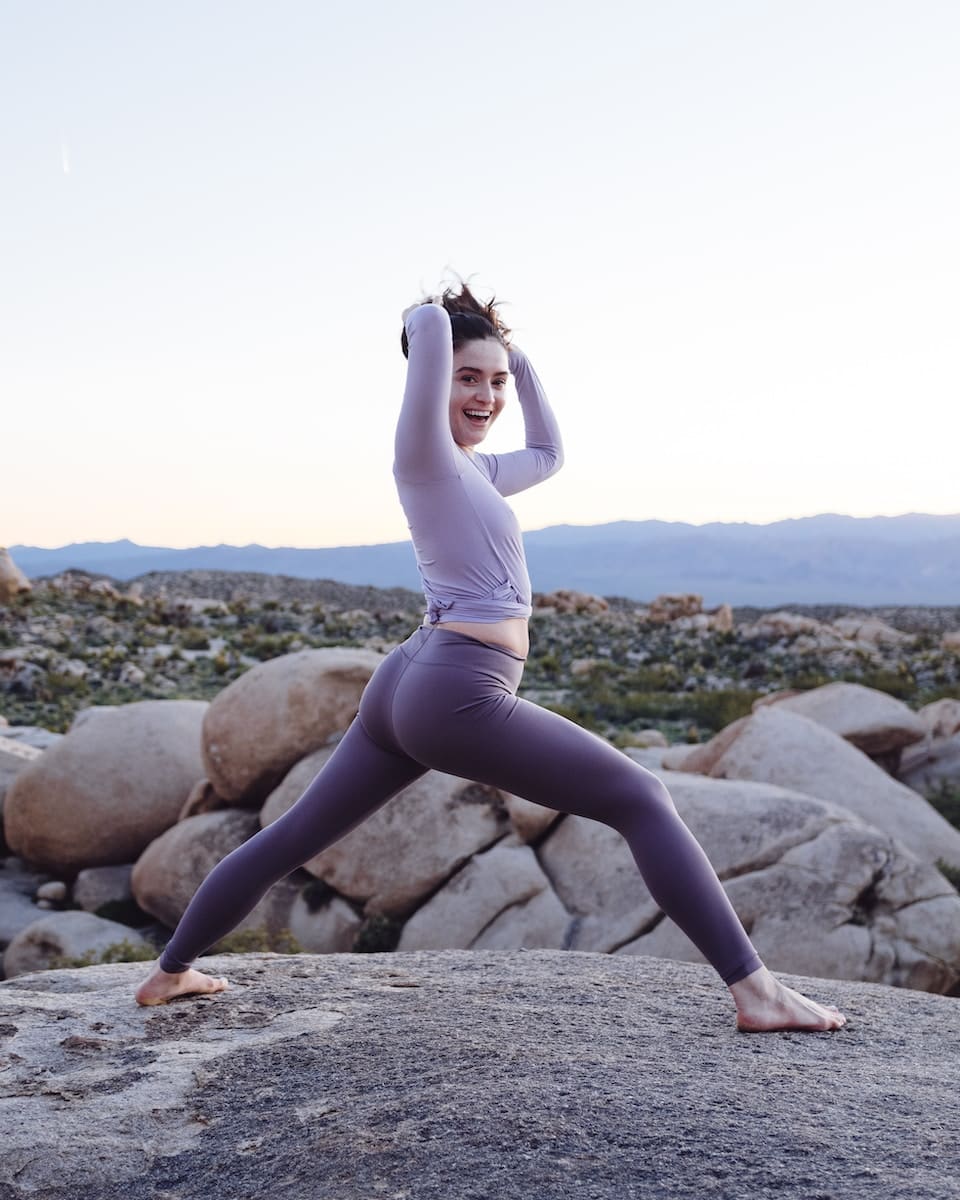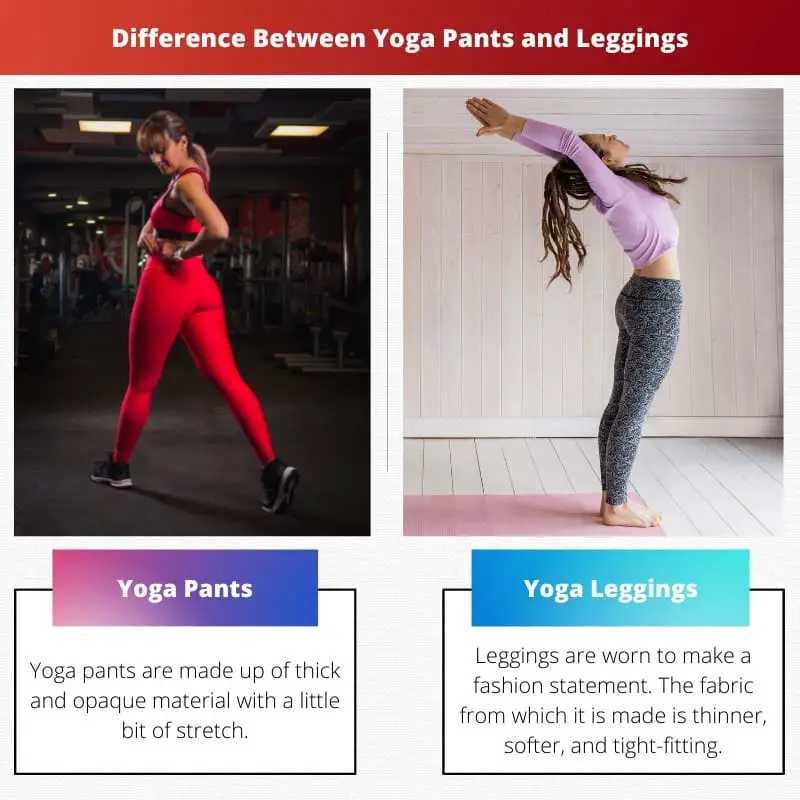Yoga pants and leggings have been used names interchangeably for many years. Yoga pants and leggings are different from each other in many aspects.
People who are starting to start working out need to make sure that they have the right clothing that makes the workout much easier and more comfortable, and they should know which one to wear on a regular basis.
People should ensure how and what type of material or fibre is used to manufacture the leggings and the yoga pants.
Key Takeaways
- Yoga pants are designed specifically for yoga and other physical activities, providing stretch and flexibility, while leggings are versatile, everyday wear garments.
- Yoga pants have a flared or bootcut leg style, while leggings have a form-fitting, tapered leg.
- Leggings come in various materials and thicknesses, whereas yoga pants are made from stretchy, moisture-wicking fabrics.
Yoga Pants vs Leggings
The difference between yoga pants and leggings is that yoga pants are designed for only physical activities like bicycling or working out, and people wear them for flexibility, whereas leggings are worn every day on a regular basis.

Yoga pants are made of thick and opaque material with a little stretch. They are worn by people who do active workouts because they provide comfort.
They are designed keeping balance and flexibility in mind by the manufacturers. The fabric from which yoga pants are made absorbs sweat easily.
Leggings are worn to make a fashion statement. The fabric from which it is made is thinner, softer, and tight-fitting. People like to wear leggings on a regular basis.
They are also available in various designs, colors, and styles.
Comparison Table
| Parameters of Comparison | Yoga Pants | Leggings |
|---|---|---|
| Fabric | The fabric of yoga pants is thick and opaque. | The fabric of leggings is thinner, soft, elastic, and tight-fitting. |
| Waistband | Yoga pants have a waistband made of elastic. | The waistband of the leggings is short. |
| Purpose | Yoga pants are worn by people who work out. | Leggings are worn by people on a regular basis. |
| Originally used by | They were originally used by yoga enthusiasts. | They were originally worn by dancers. |
| Available in | Yoga pants are available in different cuts and designs. | Leggings are available in different lengths and cuts. |
What are Yoga Pants?
Yoga pants came in 1998. Yoga pants are made of thick and opaque material with a little stretch. The fabric of yoga pants absorbs sweat easily, making the skin breathe easily.
They are styled, keeping balance in mind.
They provide leisure which tempts the customer to wear them more often.
They have been widely used from 2018 onwards. They are found in many designs like flared, bootcut, or skinny. They are worn by people who perform yoga.
It ensures comfort while doing any sports activity.
Yoga pants have thick waistbands around them. They were specifically made for yoga.
They are made of fibres like cotton, bamboo, and synthetics include lycra, polyester, spandex, and nylon. Cotton helps in absorbing and is soft to the skin.
Bamboo is used because it provides UV protection.
The pros of yoga pants are that they are comfy, use great fibres, and help the body breathe.

What are Leggings?
In the 18th century, leggings were first used. They are just worn by men. Back then, they were made of leather. In 1960, leggings were worn by women.
Nowadays, they are available in three more lengths and designs; knee, calf, and ankle. They come in a large variety of colors, designs, and patterns.
They also come in different fibres.
Leggings are made of stretchy, thinner fabric. They are a comfier option and an alternative to pants or jeans.
They are made up of lighter and thinner fabric than yoga pants. They have a thinner waistband when compared to yoga pants.
They are like tights. Leggings are made from 100 percent cotton or fleece. They can be skin-tight or loose. This depends on the fabric from which it is manufactured.
There are lengths that also vary from knee to Capri to ankle length.
They were originally made for acrobats. They are nowadays worn on a regular basis by people.
They are loved by people, especially women because they are versatile and comfortable.
They absorb sweat because of the fabric used to manufacture them.
Leggings are made from see-through materials and sometimes do not provide a lot of coverage and support.

Main Differences Between Yoga Pants and Leggings
- The difference between yoga pants and leggings is the material from which they are made.
- Yoga pants are made for yoga or workouts, but nowadays, people wear them on a regular basis also, whereas leggings are made on a daily basis and cannot be used during any sports activity.
- Leggings are skin-fit, whereas yoga pants are made loose for comfort.
- Yoga pants are much more comfortable when compared to leggings because yoga pants are made from more flexible fabrics than leggings.
- Leggings are made from a thinner material/fabric, which can be seen see-through, whereas yoga pants are made from a thicker material and provide comfort.
- Yoga pants are more durable for active workouts, whereas leggings are similar to tights and thus cannot be used during active workouts.
- Yoga enthusiasts originally used yoga Pants, whereas leggings were originally dancers.




